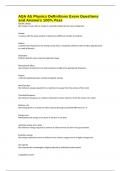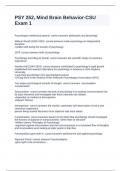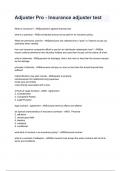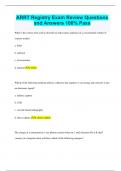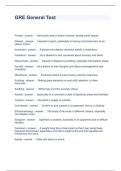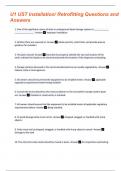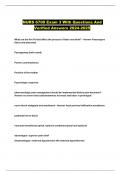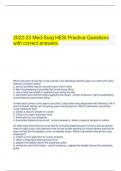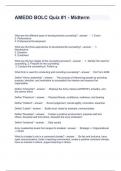Exam (elaborations)
AQA AS Physics Definitions Exam Questions and Answers 100% Pass
- Course
- Institution
AQA AS Physics Definitions Exam Questions and Answers 100% Pass Specific charge the charge to mass ratio or charge in coulombs divided by the mass in kilograms Isotope a nucleus with the same number of protons but different number of neutrons Hadron a particle that experiences the str...
[Show more]
